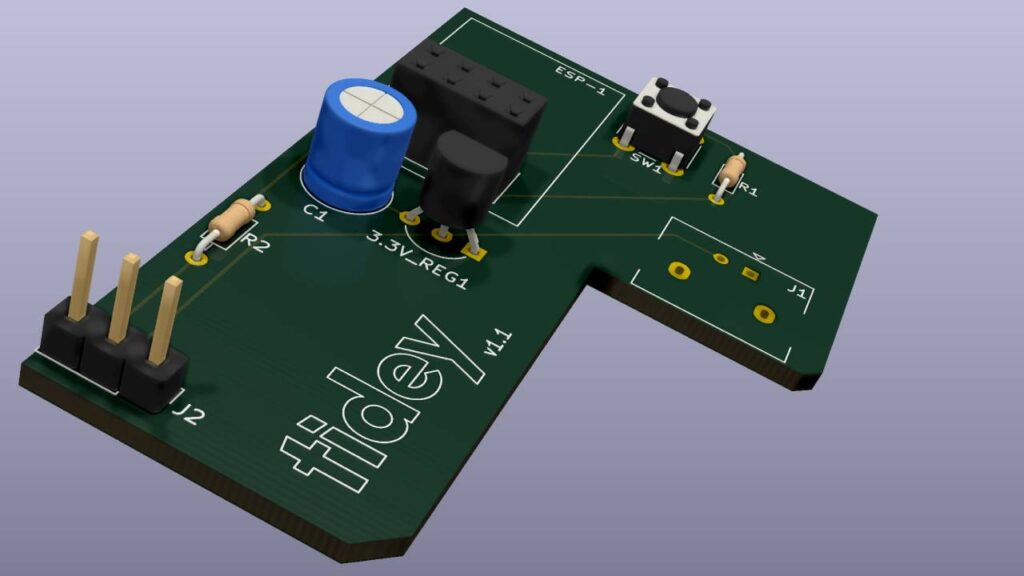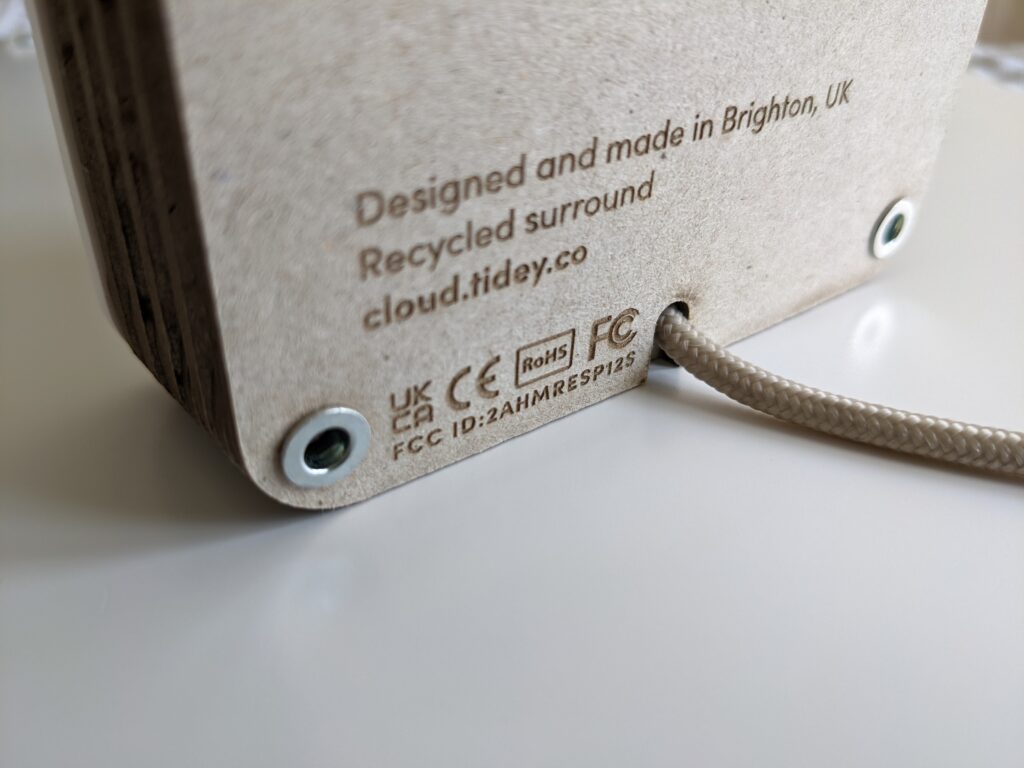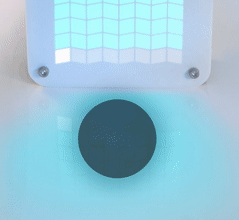Lots of people have asked what the process for creating Tidey was and how we got from concept to launch at the beginning of the year. It’s a long story(!) but here is a snapshot of some of the design and production techniques we use in our workshop in Brighton, and some of the decisions we’ve made along the way.
The design of Tidey
The design of Tidey has been an iterative process – we’ve made many many different versions in order to get the look right, the functionality right and materials right. We use various tools to this – from rough pieces of cardboard and a craft knife to prototype shapes and sizes, through to 3D models, and CAD to make more precise parts on our 3D printers.
We like to think with our hands – make things, break things and see what works and what doesn’t. This process means that it’s not always possible to know what came first in a decision journey – did we decide to use recycled, compressed card for the back of Tidey before we designed how it looked? Or did we design the look first? We’re not sure, it happened organically – we have a good resource of sustainable materials to draw upon, and also various production techniques to use, and the combination of Compressed card (‘Greyboard’) and laser cutting emerged as the winner.

Laser cutting gives us flexibility to make on-demand or in small batches without the ned for big up-front manufacturing costs, and it allows =us to keep this part of production in-house and not have to outsource to other factories or continents.




The Tidey LED display
The lens for Tidey was, in all honesty, a happy accident. We’d been playing with 8 x 8 led light matrix for a while to display data. And after 3D printing a cover for it we could see how we could diffuse the lights to make them really clear and readable. From there we wanted to refine the design and reference the sea in some way – hence the wave pattern we created. This is printed with recycled plant-based plastic (no petrochemicals here) and the way the item is printed gives us a super clean front face that allows the light to shine through.

Electrical parts are always a challenge in terms of sustainability and production, we designed the PCB to be as modular as possible as we wanted to ensure that in future Tidey electronics could be reused or repurposed in some way. We’ve used an off-the-shelf led panel for this reason, and also used an off-the-shelf WiFi chip that is very broadly used. The device is completely re-programmable by the owner (if they have good technical knowledge of this technology) and therefore could display just about any kind of data on the screen – we hope that this will become useful in the future. And, in the spirit of hacker culture, we welcome anyone that wants to experiment with theirs to get n touch! Our PCBs at present are made in Shenzhen, China – we have a very robust process with them, and have quality checked everything along the way.

The cable for Tidey is made from wheat-grass-plastic, its a bio plastic and was the best, most sustainable option we could find. We also do not provide a power supply for Tidey – our design process allowed us to make the decision to let people re-use their own USB power supplies (an old phone charger is ideal) which most people will have already, and are widely available for purchase if a new one is needed.
EMC testing the electronics
One of the most interesting aspects of taking the design from prototype to production was designing, making and testing the electronics. We were very lucky to find a company n the North of England to test our boards (Unit 3 compliance) – they placed Tidey in an anechoic chamber and zapped and blasted Tidey to see if it passed various compliance standards. It passed first time. Hence the CE, UKCA, FCC logos on the back that declare the product as tested and approved.
Packaging
We pack Tidey in plastic free FSC approved card. Inside is a cardboard insert that is made from recycled card and id also laser-cut and engraved to give a snug-fit. We’ve made stickers for Tidey that are also from recycled paper… The only thing that is used that isn’t plastic is the cable tie that the cable is wrapped with – this came from the manufacturer, so it is at least re-used! If, like us to try to reuse things as much as possible we recommend reusing the cable tie yourselves as they are great for tying bagged-up food leftovers!

Software and hardware
Tidey connects to the internet to get Tidal, sunset, and moon data. There are two aspects to the software – one is the software on the Tidey device and the other is the software on the web that talks to Tidey.
The device software takes the data feeds and torns them into animations that display on the front, we have created many versions of thhe animations to get to the one thhat Tidey uses today – its simple to read, and also elegant to look at – we’re keen to Tidey to be as ‘ambient’ as possible, the point is not to get in the way, not to shout ‘look at me’ all the time.
We’re always refining and improving the code all the time, Tidey can be updated remotely which allows us to add new features or improvements. Since going live in the summer we’ve added a brightness controller, a function that dims the Tidey display at night based on local sunset times, and also most recently an option for people to see the moon phase – ideal for those that want more information about the tides – as the moon affects the strength of the tide creating Neaps and Springs.

Our development process is essentially a conversation between our customers / users / Tidey owners – we’re listening to comments and feedback and looking to improve and develop as the product is used. Collaborating with out community is a central factor to our vision. Without our Tidey user community, Tidey wouldnt exist – so we’re always looking for feedback!
Tidey is available in-store now, click here to shop Tidey.

